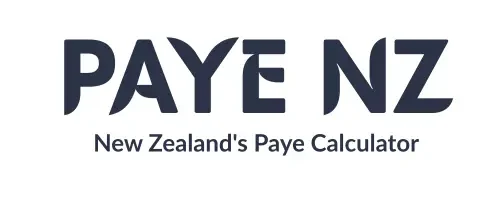PAYE for Employers in New Zealand: Everything You Need to Know
As a New Zealand employer, managing Pay As You Earn (PAYE) is a critical responsibility that ensures compliance with tax laws and supports your employees’ tax obligations. PAYE is the system through which employers deduct income tax from employees’ wages and remit it to the Inland Revenue Department (IRD). This comprehensive guide covers everything you need to know about PAYE obligations, including registration, calculation, filing, payment, record keeping, and common pitfalls to avoid. By following this guide, you can ensure your business remains compliant and avoids costly mistakes.

Introduction to PAYE
Pay As You Earn (PAYE) is New Zealand’s method for collecting income tax directly from employees’ wages. Employers deduct tax and other contributions, like KiwiSaver or student loan repayments, and send these to the IRD. Understanding PAYE is essential to avoid penalties and ensure your employees’ tax obligations are met. This guide outlines the key steps, from registration to filing, and highlights common mistakes to avoid, with references to IRD’s official guidance.
Why It Matters: Compliance with PAYE ensures your business operates legally and supports employees’ tax responsibilities. Mistakes can lead to fines, so staying informed is crucial.
What is PAYE?
PAYE is a withholding tax system where employers deduct income tax from employees’ wages, salaries, or schedular payments before paying them. The deducted amount is then paid to the IRD on behalf of the employee. PAYE also includes other deductions, such as:
- KiwiSaver contributions: Employee and employer contributions to retirement savings, typically 3% each.
- Student loan repayments: For employees with outstanding student loans, deducted at 12% above a threshold (e.g., $409 per week).
- Child support payments: If required by the IRD, with a maximum deduction of 40% of net earnings after tax.
Employers must calculate deductions accurately and ensure they use the correct tax codes, as provided by employees on the Tax Code Declaration (IR330) form. If an employee does not provide an IR330, employers must deduct PAYE at the 45% non-notified rate.
SEO Keywords: PAYE deductions NZ, withholding tax NZ, employee tax withholding NZ.
Registering with IRD
When you hire your first employee, you must register as an employer with the IRD. This step is mandatory and should be completed immediately to ensure compliance.
How to Register
- Online: Use the myIR portal (Employers) to register quickly.
- By Paper: Complete the IRD Employer Registration form (IR334) and submit it to IRD.
Information Needed
- Business details (e.g., IRD number, business industry code)
- Employer contact information
- Initial employee details (e.g., number of employees)
Why Register?
Registration allows you to access IRD’s tools, like the PAYE calculator, and ensures you can file and pay deductions correctly. The IRD will provide guidance on your obligations once registered.
Example: A small business owner hiring their first employee can register via myIR in minutes, receiving immediate access to payroll resources.
Calculating PAYE Deductions
Calculating PAYE deductions accurately is critical to avoid errors. The IRD provides tools and resources to simplify this process.
Obtaining Tax Codes
Employees must complete the IR330 form to provide their tax code, which indicates the tax rate based on their income and circumstances. If no form is provided, use the 45% non-notified rate.
Using IRD Tools
- Access the PAYE Calculator for weekly, fortnightly, or monthly pays.
- Use Weekly and Fortnightly PAYE Deduction Tables for manual calculations.
- Include other deductions: KiwiSaver, student loans, child support, and Employer Superannuation Contribution Tax (ESCT).
Handling Special Payments
- Bonuses and Lump Sums: Taxed at a flat rate based on the employee’s annual income. Refer to IRD’s guidance on lump sum payments.
- Holiday Pay: Taxed as normal pay if paid regularly, or as a lump sum if paid in advance. Check IRD’s guidance on taxing holiday pay.
Example: An employee with a tax code of M earning $1,000 weekly might have $175 deducted for PAYE (based on 2024 tax rates), plus 3% ($30) for KiwiSaver, totaling $205 in deductions.
Filing and Paying PAYE
PAYE involves two key tasks: filing employment information and paying deductions to the IRD. These tasks have different deadlines and requirements.
Filing Employment Information
- What to File: Details of employee earnings, PAYE deductions, KiwiSaver contributions, and other withholdings.
- Frequency: File every payday, within:
- 2 working days for electronic filing (via myIR or payroll software).
- 10 working days for paper filing, with specific deadlines:
- Paydays from the 1st to 15th: Within 10 working days of the 15th.
- Paydays from the 16th to the end of the month: Within 10 working days of the month’s end.
- New Employers: Can file by paper for the first 6 months. After that, electronic filing is mandatory if annual PAYE and ESCT exceed $50,000.
Paying PAYE Deductions
- Frequency: Depends on your annual gross PAYE and ESCT:
- Less than $500,000: Pay monthly by the 20th of the following month.
- More than $500,000: Pay twice monthly (20th and last working day of the month, except December’s second period, due January 15).
- Payment Methods: Internet banking, debit/credit card, or direct debit. Select the “EMP” tax type for employer deductions.
Payment Frequency Table
| Annual Gross PAYE & ESCT | Payment Frequency | Due Date |
|---|---|---|
| Less than $500,000 | Monthly | 20th of the following month |
| More than $500,000 | Twice monthly | 20th and last working day of the month |
Example: For a business with $400,000 annual PAYE, deductions from September paydays are due by October 20.
Record Keeping
Maintaining accurate records is a legal requirement for employers. These records help with compliance and are essential during IRD audits.
What to Keep
- Employee Details: Name, address, IRD number, and tax code.
- Payroll Records: Wages paid, PAYE deductions, KiwiSaver contributions, and other withholdings.
- Filing and Payment Records: Copies of employment information filings and proof of PAYE payments.
How Long to Keep Records
- 7 Years: All wage records must be kept for at least 7 years, even if you cease employing staff.
Importance of Records
Accurate records prevent penalties and simplify audits. They also help resolve disputes or errors with employees or the IRD.
Example: During an IRD audit, having detailed payroll records can quickly verify compliance, avoiding fines.
Common Pitfalls and How to Avoid Them
Mistakes in PAYE management can lead to penalties or employee dissatisfaction. Here are the most common pitfalls and how to avoid them:
- Incorrect Calculations: Use IRD’s PAYE calculator or tax tables to ensure accuracy. Cross-check calculations for special payments like bonuses.
- Late Filing: File employment information within 2 working days (electronic) or 10 days (paper). Set calendar reminders or use payroll software.
- Wrong Tax Codes: Verify that employees provide updated IR330 forms. If no form is provided, deduct PAYE at the 45% non-notified rate.
- Inaccurate Records: Maintain detailed records for 7 years. Use payroll software to streamline record keeping.
- Ignoring Mistakes: If you spot an error, contact IRD immediately (Employing Staff Contact). They can help you correct it without penalties in many cases.
Scenario: A new employer uses the wrong tax code, over-deducting tax. By contacting IRD promptly, they can amend the filing and refund the employee without penalties.
Additional Obligations
Beyond PAYE, employers may have other responsibilities:
- KiwiSaver: Enroll eligible employees into a KiwiSaver scheme unless they opt out. Employers contribute at least 3% of gross salary, subject to ESCT (10.5%–33% based on income).
- Student Loans: Deduct 12% of income above the threshold (e.g., $409 weekly, $818 fortnightly, $1,765 monthly).
- Child Support: Deduct the amount specified by the IRD, up to 40% of net earnings, using variation codes if applicable.
- Payroll Giving: Offer employees the option to donate to approved charities through payroll deductions, providing a 33.33% tax credit.
Example: An employee earning $50,000 annually with a student loan has $3,672 deducted yearly ($50,000 – $21,268 threshold × 12%).
Benefits of Using Payroll Software
Using payroll software can significantly simplify PAYE management. Solutions like Employment Hero, PayHero, and Thankyou Payroll integrate with IRD’s systems, automating calculations, filings, and payments.
Advantages:
- Accuracy: Reduces calculation errors.
- Efficiency: Automates filing and payment processes.
- Compliance: Ensures obligations are met on time.
- Reporting: Provides easy access to records for audits.
Example: A small business using PayHero can file employment information directly to IRD, saving hours each pay cycle.
Checklist for New Employers
- Register with IRD as an employer using myIR or IR334 form.
- Obtain IR330 forms from employees to determine tax codes.
- Set up a payroll system or software for accurate calculations.
- Calculate PAYE deductions using IRD’s tools.
- File employment information every payday (electronic or paper).
- Pay PAYE deductions to IRD on schedule (monthly or twice monthly).
- Keep accurate records for 7 years, including employee and payroll details.
- Stay informed about tax law changes via IRD updates.
Resources and Further Reading
The IRD and Employment New Zealand provide authoritative resources to help employers manage PAYE effectively. Key resources include:
- IRD Website: Comprehensive guidance on PAYE, registration, and filing (Employing Staff).
- Employment New Zealand: Information on employment agreements and deductions (Employment New Zealand).
- Key Tools:
- PAYE Calculator: Calculate deductions for weekly, fortnightly, or monthly pays.
- Employer Guide (IR335): Detailed instructions for new employers (Employing Staff).
- Payday Filing Guide: Explains filing requirements and deadlines (Payday Filing).
Conclusion
Managing PAYE is a critical responsibility for New Zealand employers, but it doesn’t have to be overwhelming. By registering with IRD, using their tools for accurate calculations, filing and paying on time, and keeping detailed records, you can stay compliant and avoid costly mistakes. If errors occur, contact IRD promptly to resolve them. Leverage the resources provided by IRD and Employment New Zealand to ensure your payroll processes run smoothly.
